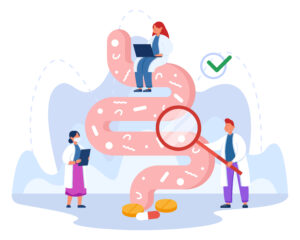A colonoscopy is a medical procedure that allows doctors to examine the inner lining of your large intestine (colon) and rectum to check for abnormalities such as polyps, ulcers, or tumours. It is commonly used for detecting colorectal cancer, monitoring existing digestive conditions, and diagnosing unexplained symptoms such as abdominal pain or changes in bowel habits. Although the idea of undergoing a colonoscopy can seem intimidating, understanding the process can help ease your concerns. Here’s a guide on what to expect before, during, and after a colonoscopy.
Why You Might Need a Colonoscopy
A colonoscopy is recommended for several reasons, including:
- Colorectal cancer screening: People aged 45 and older are often advised to undergo regular colonoscopies to screen for colorectal cancer. If you have a family history of the disease, your doctor may recommend starting earlier.
- Investigating symptoms: If you experience unexplained abdominal pain, rectal bleeding, chronic diarrhoea, or sudden weight loss, your doctor might suggest a colonoscopy to identify the underlying cause.
- Monitoring conditions: If you have inflammatory bowel disease (IBD) such as Crohn’s disease or ulcerative colitis, or if polyps have been found in previous screenings, a colonoscopy is used to monitor your condition.
How to Prepare for a Colonoscopy
Proper preparation is crucial for a successful colonoscopy. The cleaner your colon is, the more accurate the results will be. Here are the main steps involved:
1. Dietary Changes
A few days before the procedure, your doctor may recommend that you switch to a low-fiber diet. Foods to avoid include whole grains, nuts, seeds, raw vegetables, and fruits with skins. The day before your colonoscopy, you will need to follow a clear-liquid diet, which means consuming only water, broth, clear juices, tea, and gelatin. Avoid red or purple liquids, as they can resemble blood in the colon.
2. Bowel Preparation (Bowel Prep)
The most critical part of preparing for a colonoscopy is cleansing your colon. Your doctor will prescribe a laxative solution that you’ll need to drink the night before and possibly the morning of the procedure. This solution will cause frequent bowel movements to empty your colon. Although this part of the process can be uncomfortable, the procedure needs to be effective.
Make sure to stay close to a bathroom and stay hydrated by drinking plenty of clear liquids, especially water, during this time.
3. Adjust Medications
If you take regular medications, such as blood thinners or aspirin, inform your doctor. You may need to adjust your dosage or stop certain medications temporarily before the procedure. Always consult your doctor about any changes to your medication routine.

What Happens During the Colonoscopy
The actual colonoscopy procedure usually takes 30 to 60 minutes. Here’s a step-by-step overview of what happens during the procedure:
1. Sedation
Before the procedure begins, you will be given a sedative to help you relax and prevent discomfort. The sedative may be administered intravenously, and you’ll remain awake but in a drowsy, relaxed state. In some cases, general anaesthesia may be used, putting you fully asleep.
2. Inserting the Colonoscope
Once you’re sedated, the doctor will gently insert a long, flexible tube called a colonoscope into your rectum. The colonoscope has a tiny camera on the end, which transmits images of your colon to a screen in real-time. The doctor will use this camera to carefully examine the entire length of your colon.
3. Identifying and Removing Polyps
If any polyps or abnormal tissue are found, the doctor may remove them using tiny tools attached to the colonoscope. This is a painless process, and the removed polyps will be sent to a lab for testing to determine if they are cancerous or precancerous.
4. Inflating the Colon
To improve visibility, the doctor may pump air or carbon dioxide into your colon, which can cause mild cramping or bloating. This sensation usually goes away after the procedure when the gas is released.
What to Expect After the Colonoscopy
After the procedure, you’ll be monitored in a recovery room until the effects of the sedative wear off. Here’s what to expect during recovery:
1. Immediate Aftercare
You may feel groggy or disoriented for a few hours due to the sedative. It’s essential to have someone drive you home, as you won’t be able to operate a vehicle or make important decisions for the rest of the day. Some mild cramping, bloating, or passing gas is normal as your body expels the air used during the procedure.
2. Results
Your doctor will discuss the initial findings with you after the procedure. If any polyps or abnormal tissue were removed, it may take a few days to receive the lab results. Depending on the findings, your doctor will advise on the next steps, which could include follow-up appointments or lifestyle changes.
3. Resuming Normal Activities
Most people can return to normal activities the day after the colonoscopy. However, it’s a good idea to take it easy for the remainder of the day following the procedure. Avoid heavy lifting or strenuous exercise for 24 hours.
When to Contact a Doctor
Although complications from a colonoscopy are rare, it’s essential to be aware of the warning signs of a possible issue. Contact your doctor immediately if you experience any of the following after your procedure:
- Severe abdominal pain or cramping
- Heavy or persistent bleeding
- Fever or chills
- Dizziness or fainting
Conclusion
A colonoscopy is a safe and effective procedure for detecting colorectal cancer and other digestive conditions. While the preparation and procedure may seem daunting, understanding each step can help ease your anxiety. Proper preparation, including dietary changes and bowel prep, ensures that the doctor can get a clear view of your colon. The procedure itself is quick, typically painless, and performed under sedation to minimize discomfort. After the procedure, most people experience only mild bloating or cramping and can return to their regular activities the next day.









